Today, let’s talk about one of the most vital questions in the kitchen.
What is the difference between a pot and a pan?
Pots and pans dominate the cooking world. They are, after all, two of the most employed kitchenware. If we want to recreate those delicious dishes we see in cookbooks, it seems vital to know the difference between these two.
Pots and pans may seem easy to distinguish at first glance, but once you get to know the different types of pots and pans, you might find yourself scratching your head trying to figure out which is which. We understand, and that’s why we’re here to help.
Without further delay, let’s dish out this question.
| Pots | Pans | |
|---|---|---|
| Typical Uses | Boiling, simmering, and slow-cooking | Frying, sautéing, and fast-cooking |
| Depth | >4 inches | <4 inches |
| Sides | Straight/Curved | Mostly straight |
| Handles | Two short | One long |
| Accessories | Steamers or pasta inserts | Less suitable |
| Shape | Round, oval | Round, square |
| Lid | Often used with a lid for slow-cooking or boiling | Typically used without a lid |
| Examples | Stockpot, saucepan, dutch oven | Frying pan, sauté pan, grill pan |
5 Ways to Distinguish Pots from Pans
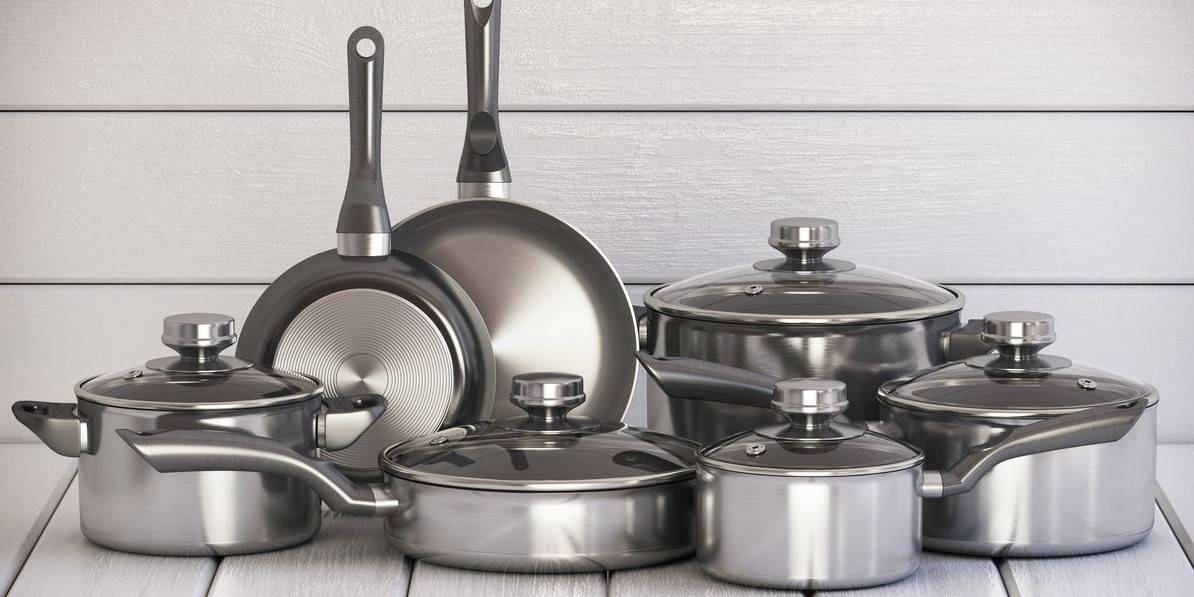
With all the different pots and pans, it’s not always easy to know which of the two you have. It could be a little challenging to keep track of which is which. Well, we have not one, not two, but five things you can check if you’re not sure which of the two you are holding. Let’s discuss each feature in some detail.
Depth (or Height) of the Sides
First on the list is depth. Others like to call it height. Either of the two terms would work. The important thing is that we’re discussing the distance from the top to the bottom of the pot or pan.
When we’re talking about the difference between the two, depth is one of the main factors that separate the two.
A pot is supposedly deeper than a pan. On the other hand, as you would expect, pans are known to be shallower.
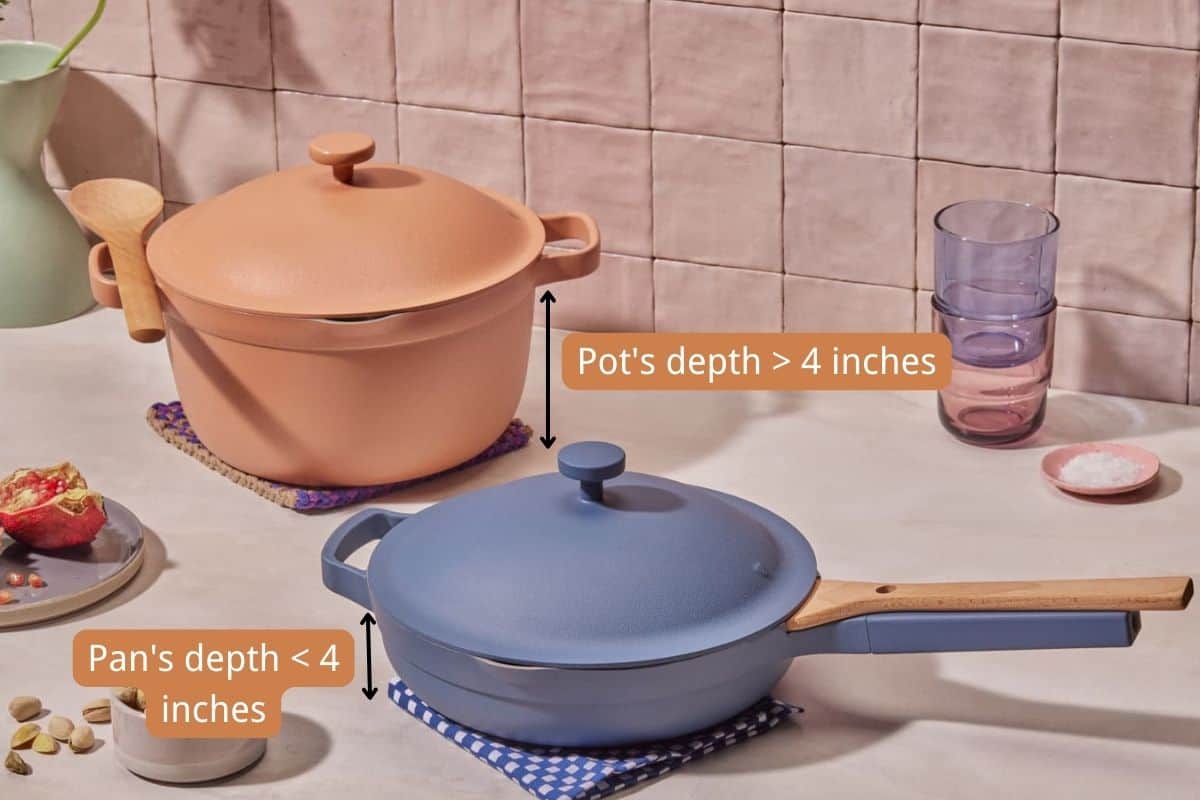
Now, you might ask how deep is deep for cookware to be a pot. Conversely, you might ask how shallow is shallow for kitchenware to be a pan. Some say that 4 is the magic number, 4 inches to be exact. Sides below 4 inches are supposedly pans. Sides that are 4 inches or higher are supposedly pots. However, that’s not all you want to observe when checking out the sides.
The Curve of the Sides
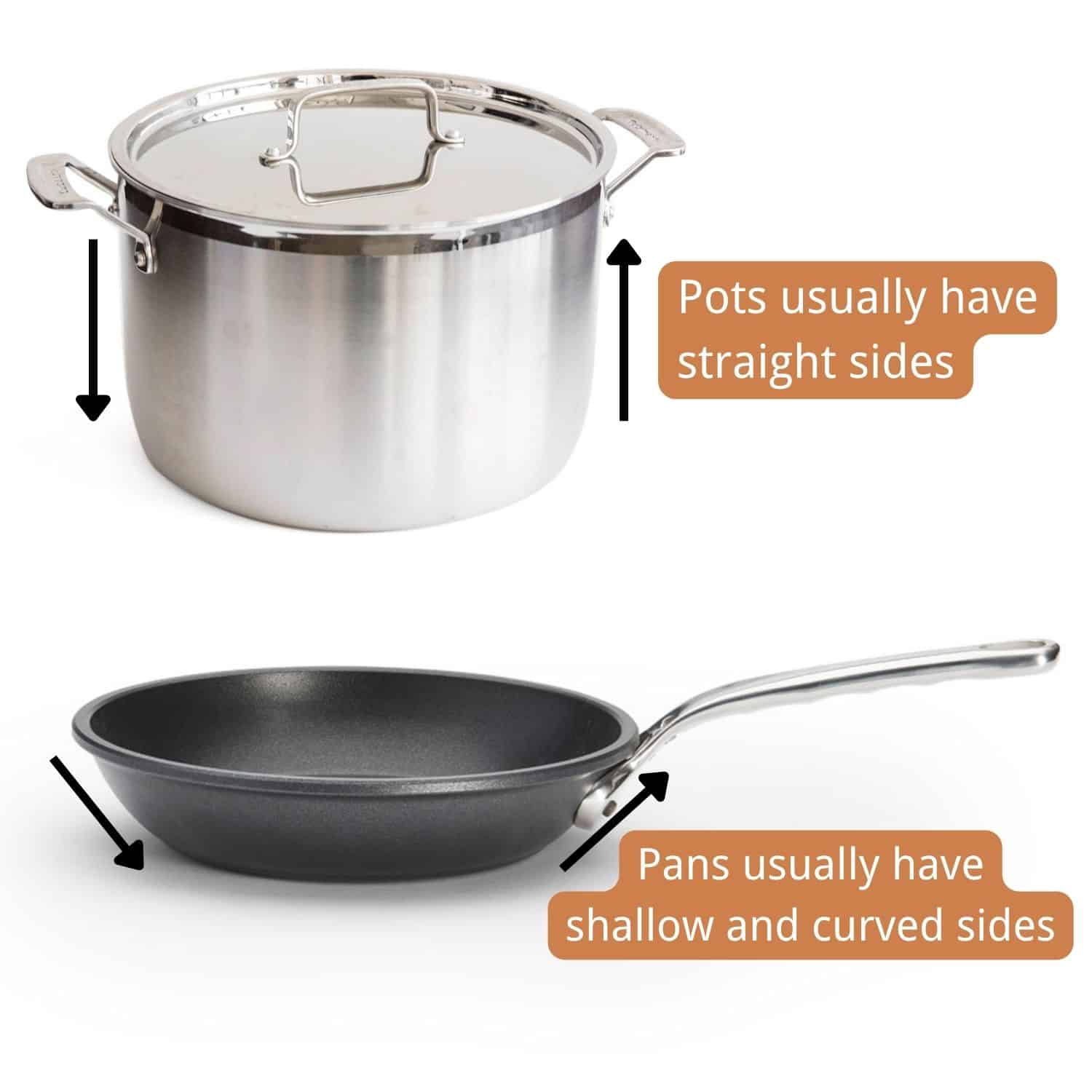
Next, you also want to examine the curve of the sides of the cookware in question.
Both pots and pans can have straight sides. However, it is not unusual for pans to have curved sides. If the kitchenware you’re holding has shallow and curved sides, it is probably a pan.
Handles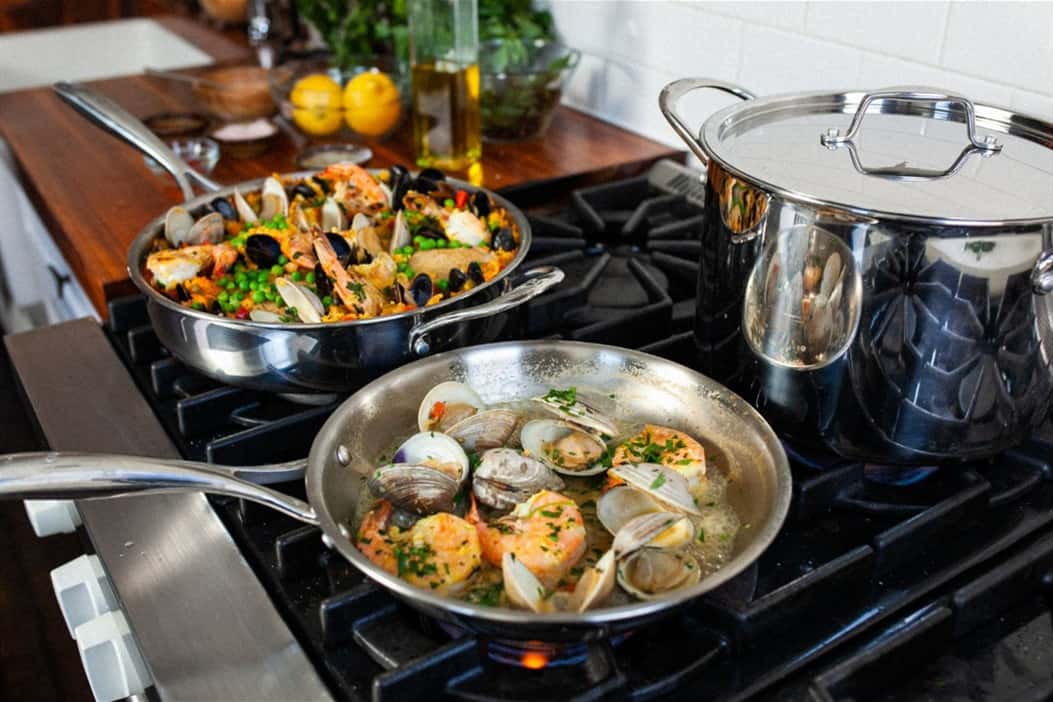
Since you’re already checking out the sides, you might also want to go ahead and check the handle or the handles.
For many, the handle might be one of the easiest ways to tell whether a piece of cookware is a pot or a pan.
If there is only one handle, there is a big chance you’re holding a pan. The presence of two handles most probably indicates that you have a pot.
Additionally, many pots have smaller handles on either side, but the design can vary. On the other hand, pans have one long handle. Before, this factor was probably my only guide to find my way around pots and pans. However, as I have found out, and you will see later. Looking at the handle or handles is not enough. They’re good to check out, but sometimes they are not the only means of telling the two apart.
Accessories You Can Use with the Cookware
Another good way to tell if you are holding a pot or a pan is to see if you can use accessories along with it. If you could, you most likely have a pot with you.
As you might have already noticed, pots have lots of room. With that, it does make sense that pots could accommodate accessories. On the other hand, pans can’t offer that much space, and that’s why they can’t handle accessories all that well.
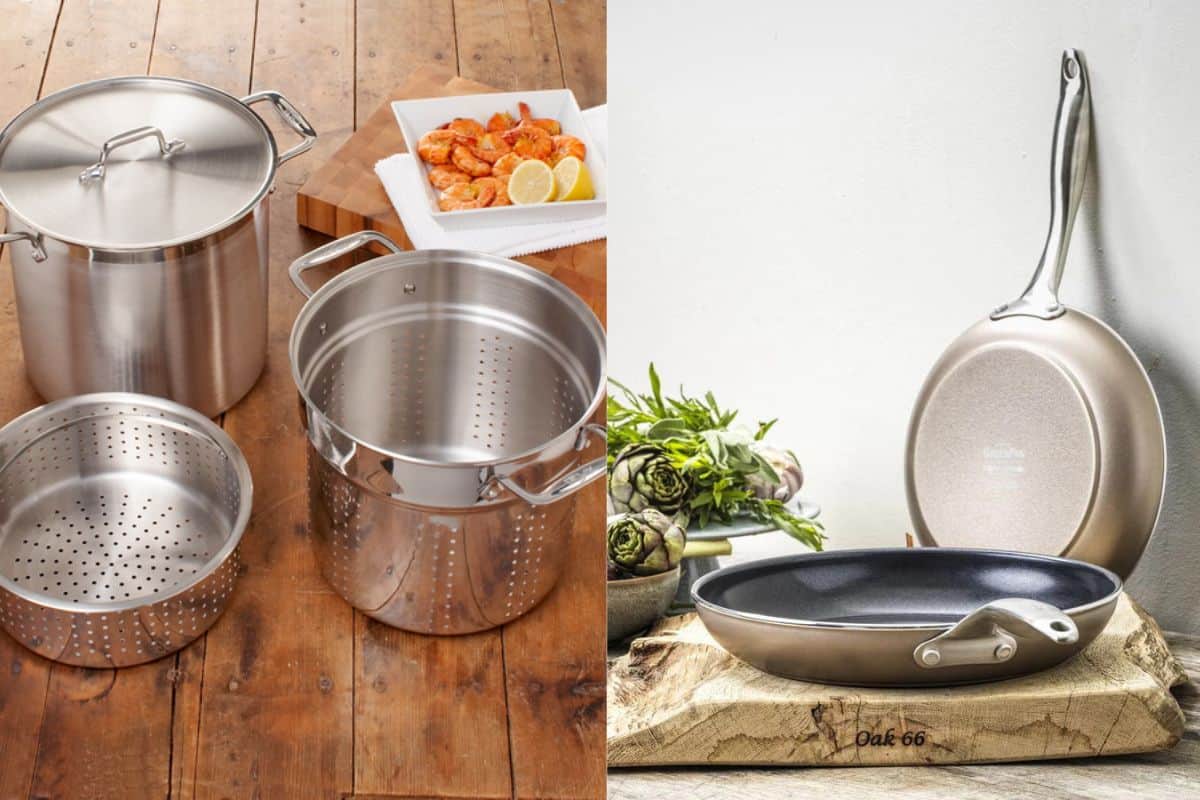
Purpose of the Cookware
Finally, let’s talk about the purpose of these two cookware. The two could be interchangeable for many things, but there are some things that one excels from the other.
For one, pots are usually used for boiling, while pans are usually for frying.
Let’s talk about another difference. Pots are known to be for slow-cook meals. So, as you might have guessed, pans, on the other hand, are known to be for fast-cook meals. However, this difference is not strict. You might find some quick meals cooked in pots and some slow meals cooked in pans.
In addition to being a distinguishing factor, the purpose of the cookware is one of the main reasons differentiating the two is a must. Sure, you can interchange the two for many tasks. However, knowing the right tool for the job does not only help in cooking up a delicious dish. It can also make the cooking process a lot easier.
Common pot and pan types:
| Category | Type | Description |
| Pots | Pressure Cooker | Useful for cooking food quickly, such as meats or beans. |
| Stock Pot | Used for making stock or cooking large quantities of food. | |
| Dutch Oven | Versatile pot used for stews, roasting, or soups. | |
| Casserole Pot | Good for stews or slow cooking dishes. | |
| Porridge Pot | Specially designed for cooking porridge, usually with a non-stick layer. | |
| Steamer Pot | Used for steaming food, like vegetables or dumplings. | |
| Slow Cooker | Designed for slow cooking meats or beans over a long period. | |
| Multi-Cooker | An electric pot with multiple functions such as rice cooking, stewing. | |
| Pans | Non-stick Pan | Has a special coating to prevent food from sticking, good for frying. |
| Cast Iron Pan | Heavy, retains heat well, suitable for frying and roasting. | |
| Wok | Ideal for stir frying, especially for Asian cuisine. | |
| Frying Pan/Skillet | Low-sided, used for frying foods like eggs or meat. | |
| Grill Pan | Bottom is textured to mimic the effects of grilling. | |
| Roasting Pan | Deep pan used for roasting meats or vegetables. | |
| Aluminum Pan | Good heat conductivity, but not recommended for acidic foods directly. | |
| Stainless Steel Pan | Durable, can withstand high temperatures, good heat conductivity. |
The Jury is Still Out
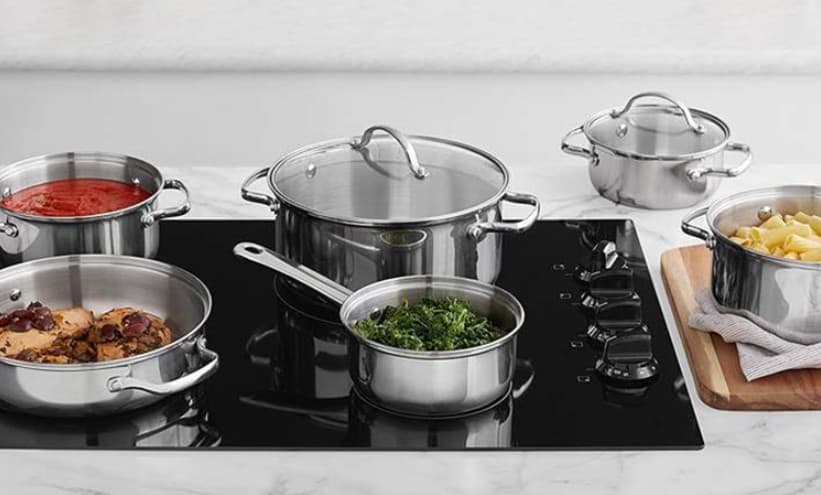
Even with this list, you might find that distinguishing pots and pans can sometimes still be confusing. You’re not alone! The difference between the two is not clear-cut, after all.
You’d think you can trust the names of pots and pans, but apparently, you can’t! Take the saucepan, for example. It’s easy to assume it’s a pan. It’s called a saucepan, after all. To add, it also has a single long handle. However, you might be surprised to know that it’s not strictly a pan. It can also be classified as a pot. Depending on who you ask, you would get different answers. Some would tell you it is strictly a pot, while others would tell you that it can be both.
That’s not where the confusion ends. In alignment with the topic of saucepans being both a pot and a pan, when it comes to pots and pans, it is known that pots can be pans, but apparently, pans cannot be pots.
So, as you can see, it might seem easy to distinguish the two cookware, but it’s not as easy as it looks.
Is One Better Than the Other?
The answer to this question is both a yes and a no.
It’s a yes because when it comes to some dishes one would undoubtedly be better than the other. Frying isn’t the best use for a pot. On the other hand, making soups isn’t the best way to employ pans. For fried food, you’d usually want a pan. For soups, you’d want a pot.
Now, let’s answer why it is also a no. Well, that’s because you can’t really do away with the other. You can’t fill your cookware cabinets with pots in the same way you can’t fill it with only pans. They may be interchangeable for some tasks, but not always. Depending on what you usually cook, you’d want to have some pots and pans on your hands.
Why Know the Difference?
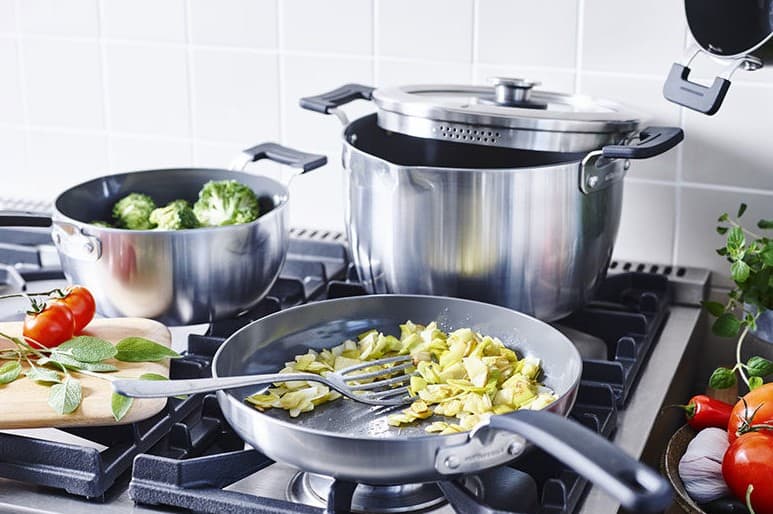
There are many different pots and pans out there, and telling the difference between the two is not always easy.
Earlier, we said that the two could work interchangeably for some tasks.
Now, with all of that said, you might be wondering if knowing the difference between the two pieces of cookware is worth the trouble.
We think so, yes!
Knowing the difference between pots and pans will not only give you major master chef vibes, but it will also greatly help you in the kitchen.
As you might already know, finding the right things is essential to a great dish. With that said, you shouldn’t only be looking for mouth-watering recipes and fresh ingredients. You might also want to be on the lookout for the right tools to add and use.
Finding and using the right tools won’t only bring out a great dish, but will also make the whole cooking process easier.
So yes, it could be a little confusing, especially with all the pots and pans from which you can take your pick, but we believe knowing the difference between the two is worth it.
Summary
What is the difference between a pot and a pan?
There is plenty of cookware out there. Even if we narrow it down to pots and pans, you will see that there are still dozens and dozens out there. It could all be confusing! Still, we hope this little guide got to help with your concern!
Now, you are ready to build your cookware arsenal or upgrade your collection. Whichever way, you might want to watch this video:
If you have other questions or concerns about pots and pans, you might want to go and check out our past discussions.

Michael Johnson is the founder of Pan Mastery, Inspired by his blacksmith grandfather’s legacy has a deep appreciation for hand-crafted pots and pans, he provides invaluable guides, reviews, and recipes to enhance your culinary journey.

